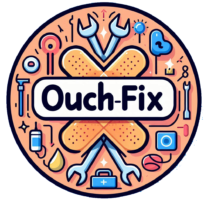Living with chronic pain can be exhausting. It affects your body, mood, and overall quality of life. But managing pain isn’t just about medication or doctor visits — small, consistent changes in your daily routine can make a meaningful difference. Here are five practical habits that can help you reduce chronic pain and enhance your overall well-being.
1. Get Moving
Exercise might be the last thing on your mind when you’re hurting, but movement is one of the most effective ways to manage chronic pain. It strengthens muscles and joints, improves circulation, and triggers the release of endorphins, your body’s natural painkillers.

How to start:
- Walking: Even a 10–15 minute stroll around your neighborhood can make a difference.
- Yoga or Stretching: These improve flexibility and reduce tension.
- Swimming or Water Aerobics: Gentle on the joints, perfect for those with arthritis or mobility issues.
Expert tip: Consistency matters more than intensity. Daily short sessions are far more beneficial than sporadic intense workouts. Over time, your body will feel stronger, and your pain may decrease naturally.
Case Study: A 2023 study in the Journal of Pain Research found that participants who engaged in daily low-impact exercise reported a 20% reduction in pain intensity over eight weeks.
2. Eat Better
What you eat plays a crucial role in how your body handles pain. Anti-inflammatory foods can reduce flare-ups and give your body the nutrients it needs to repair and maintain itself.
Foods to include:
- Colorful fruits and vegetables: Berries, leafy greens, and peppers are rich in antioxidants.
- Lean proteins: Chicken, fish, beans, and legumes support tissue repair.
- Whole grains: Oats, quinoa, and brown rice stabilize blood sugar and reduce inflammation.
- Healthy fats: Olive oil, avocado, and nuts help fight inflammation.
Tips for success:
- Stay hydrated — water aids in joint lubrication and toxin removal.
- Limit processed foods, sugar, and trans fats, which can increase inflammation.
Expert Opinion: According to Healthline, an anti-inflammatory diet may help reduce symptoms in conditions like arthritis and fibromyalgia.

Also Read: How can Yoga Help in Maintaining Wellness and Reducing Aches?
3. Take Time to Relax and Reflect
Stress amplifies pain. That’s why incorporating relaxation and mindfulness into your day is essential. Simple practices can calm your nervous system and ease tension in your body.

Effective methods:
- Meditation: Just 5–10 minutes of deep breathing or guided meditation can lower stress hormones.
- Journaling: Track your symptoms, note what triggers pain, and celebrate small victories.
- Mindful breaks: Even sitting quietly, focusing on your breath, or listening to calming music can reset your body and mind.
Pro tip: Pair relaxation with gentle movement, like stretching or yoga, for a double effect on pain management and mental well-being.
Study Insight: Research from the National Institutes of Health indicates mindfulness meditation can significantly reduce perceived pain intensity and improve quality of life in chronic pain patients.
4. Quit Smoking
Smoking isn’t just harmful to your lungs and heart — it also worsens chronic pain. Nicotine reduces blood flow, slows healing, and increases inflammation, which can exacerbate pain.
Benefits of quitting:
- Faster recovery from injuries or flare-ups.
- Improved energy levels and stamina.
- Reduced risk of serious conditions like cardiovascular disease and osteoporosis.
Tips to quit:
- Seek support groups or counseling.
- Use nicotine replacement therapy if needed.
- Replace smoking habits with healthier alternatives, like herbal tea or short walks.
Expert Note: The CDC reports that smokers are more likely to develop chronic pain conditions compared to non-smokers, and quitting can help reverse some of these effects.
5. Stay Connected
Isolation can intensify both mental and physical pain. Maintaining social connections is not just good for your mood — it’s good for your body too.

Ways to stay connected:
- Regular calls or visits with friends and family.
- Join local support groups for chronic pain or health-focused communities.
- Engage in hobbies or volunteer work that lets you meet new people.
Why it works: Positive social interactions lower stress, reduce inflammation, and even improve pain tolerance.
Real-World Example: Patients in a 2022 Pain Medicine study who participated in weekly social groups reported improved mood and reduced pain scores over six months.

Also Read: What are the Best Mindfulness Techniques for Reducing Chronic Pain?
Final Thoughts
Managing chronic pain is a journey, not a quick fix. The habits you build daily can have a profound effect on your pain levels, energy, and overall quality of life. Start small, stay consistent, and celebrate your progress along the way.
Recap of Key Habits:
- Get moving — even gentle activity helps.
- Eat anti-inflammatory, nutrient-rich foods.
- Make time for relaxation and mindfulness.
- Quit smoking for better healing and pain management.
- Maintain social connections to boost mental and physical health.
With these strategies, you’ll not only manage pain better but also enhance your overall well-being. Remember, small steps lead to big changes.
Frequently Asked Questions (FAQs)
Q1. How soon can I expect results from these habits?
Results vary, but most people notice improvements in mood and pain levels within a few weeks of consistent practice.
Q2. Can I combine exercise and mindfulness?
Yes! Yoga, Tai Chi, or mindful walking are excellent ways to combine both for maximum pain relief.
Q3. Are supplements helpful for chronic pain?
Some, like omega-3s or turmeric, may help reduce inflammation, but always consult your doctor before starting any supplement.
Q4. What if I have limited mobility?
Even seated exercises, gentle stretching, or water-based activities can be beneficial.
Q5. How do I stay motivated to maintain these habits?
Track your progress, celebrate small wins, and consider joining a support group for accountability.
 Skip to content
Skip to content




